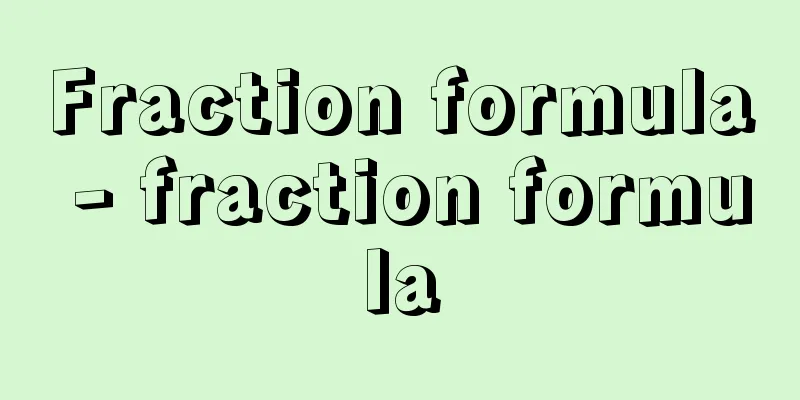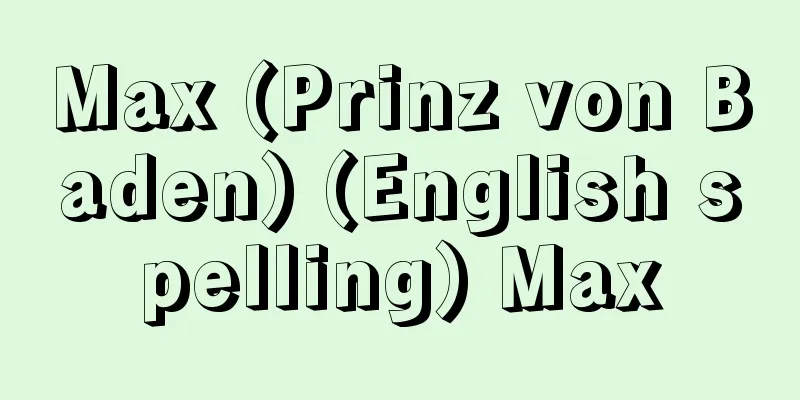Fraction formula - fraction formula

|
Let A and B be rational polynomials (polynomials) for some characters (especially variables), and let B be identically non-zero (at least one of the coefficients is non-zero). The equation A/B is called a fractional equation (or rational equation) for these characters. A is called the numerator and B the denominator. If the degree of the numerator is smaller than the degree of the denominator, it is called a proper fractional equation, otherwise it is called an improper fractional equation. Additionally, if the numerator and denominator have no common factors other than a constant, they are called irreducible, otherwise they are called reducible. When an equation is reducible, eliminating the common factors of the numerator and denominator is called reducing. For example, The equality and four arithmetic operations of fractional expressions are defined as follows:
[Yoshio Takeuchi] [Reference item] |Source: Shogakukan Encyclopedia Nipponica About Encyclopedia Nipponica Information | Legend |
|
A、Bをそれぞれいくつかの文字(とくに変数)についての有理整式(多項式)とし、Bは恒等的にゼロでない(係数のうち少なくとも一つはゼロでない)とする。式A/Bをこれら文字についての分数式(または有理式)という。Aを分子、Bを分母といい、分子の次数が分母の次数より小さいとき真分数式、そうでないとき仮分数式という。また、分母と分子が定数以外に公約数をもたないとき、既約(きやく)、そうでないとき可約であるという。可約な場合、分母分子の公約数を消し去ることを約分する(約す)という。たとえば、 分数式の相等・四則は次のように定義される。
[竹内芳男] [参照項目] |出典 小学館 日本大百科全書(ニッポニカ)日本大百科全書(ニッポニカ)について 情報 | 凡例 |
>>: Fraction - bunsuu (English spelling) fraction
Recommend
Konohanori (English name) Laingia pacifica Yamada
A species of the Rhodophyceae family (illustration...
Eucheuma striatum (English spelling)
…[Mitsuo Chihara]. . . *Some of the terminology t...
Genta Ebira
...The Genji warrior Genta Kajiwara is made into ...
rigid frame
…In English, it is called a rigid frame. It is a ...
Gyokurinen - Gyokurinen
A collection of songs. The eighth anthology of sog...
Kobanoshikaguma - Kobanoshikaguma
A perennial fern of the Acanthaceae family that is...
Mary [I] - Mary
Queen of England during the Tudor dynasty (reigned...
Triple Entente (English: Triple Entente) French
The cooperative system of the UK, France, and Rus...
Garget
…The whole plant resembles pokeweed, but the flow...
Wilkes, J.
…A radical political movement led by John Wilkes ...
Fossil - Kaseki (English spelling) fossil
Overview Fossils are the remains of organisms (pa...
Mukkuri - Mukkuri (English spelling)
Ainu Jew's Harp. A vibrating valve is made by...
icon
A small pictorial symbol that symbolizes a program...
Mikisaburo Rai - Mikisaburo Rai
A patriot of the Sonnjo (revere the expulsion of ...
Tatsunosuke Takasaki
Businessman and politician. Born in Osaka Prefect...









